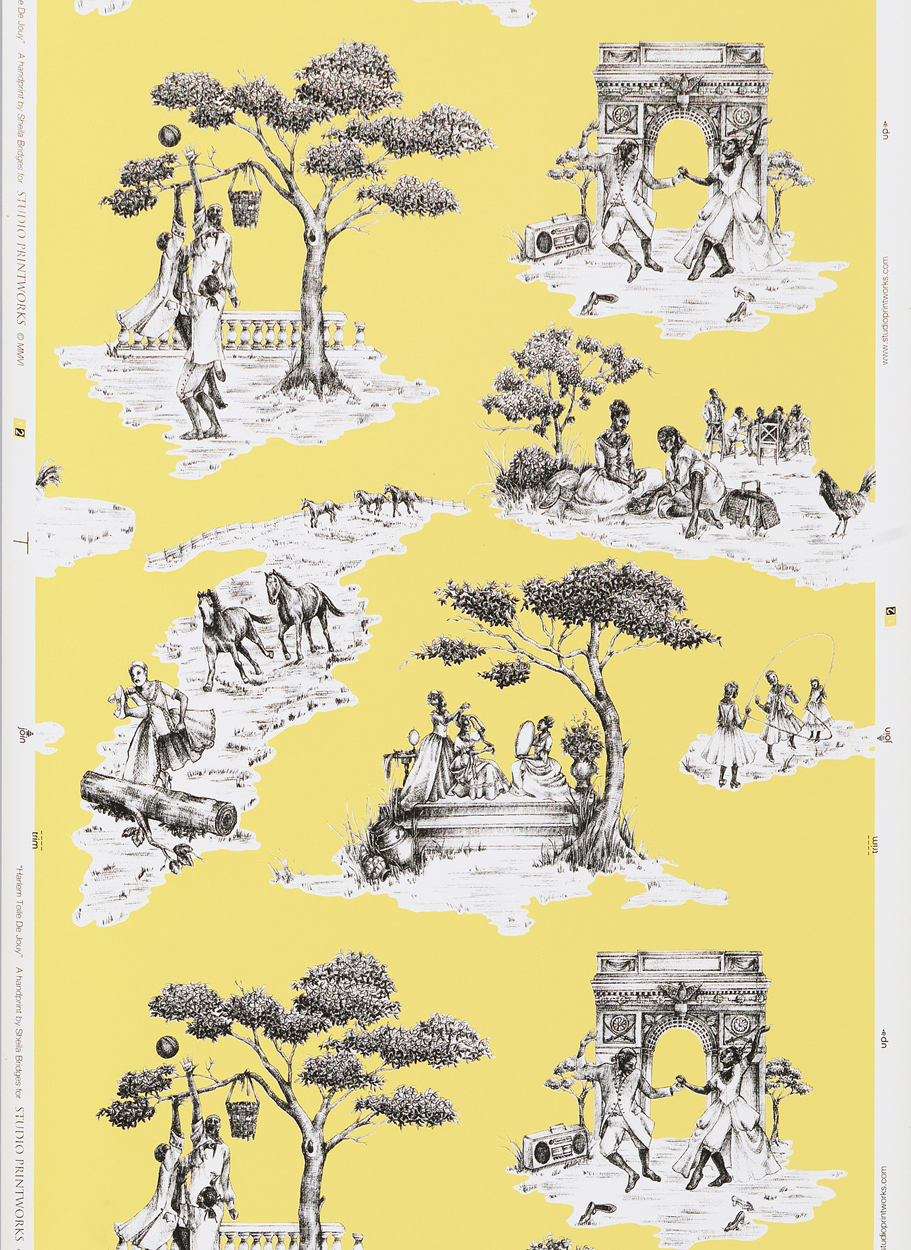Harlem Toile de Jouy was inspired by the traditional format of toiles de Jouy, copper plate printed fabrics popular in the 18th century. They frequently showed pastoral scenes and personifications of the Continents with a somewhat staggered placement across the width of the fabric. Working with this design format Bridges has replaced the classical landscape scenes and personifications found on historic toiles with contemporary views that explore some of the stereotypes embedded in the African American experience. These scenes include young men playing basketball, a couple dancing to a boom box, and people eating fried chicken and watermelon. Toiles did not appear as designs on wallpapers until early in the twentieth century during the Colonial Revival period. There are a number of these early toile papers in the collection.
Bridges’ Harlem Toile adds a nice contemporary version to the more historic toile wallpapers in the collection produced 100 years ago. It also enhances a group of novelty papers popular from the mid-nineteenth century, which can be fun, attractive, and not always meant to be taken literally.
Harlem Toile de Jouy was created by African-American designer Sheila Bridges for Studio Printworks. Bridges, who opened her own interior design business in 1994, received much acclaim for designing the Harlem office of former president Bill Clinton. She was named “America’s Best Interior Designer” in 2001 by CNN and Time magazine. Bridges began hosting her own television show, Sheila Bridges Designer Living, for the Fine Living Network, in 2003. In 2006, she made Essence magazine’s list of the world’s 25 most inspiring women. In addition to interior design, Bridges has expanded into home furnishings design, creating pieces such as Harlem Toile.
Gregory Herringshaw is the head of the Wallcoverings Department at Cooper Hewitt, Smithsonian Design Museum.
